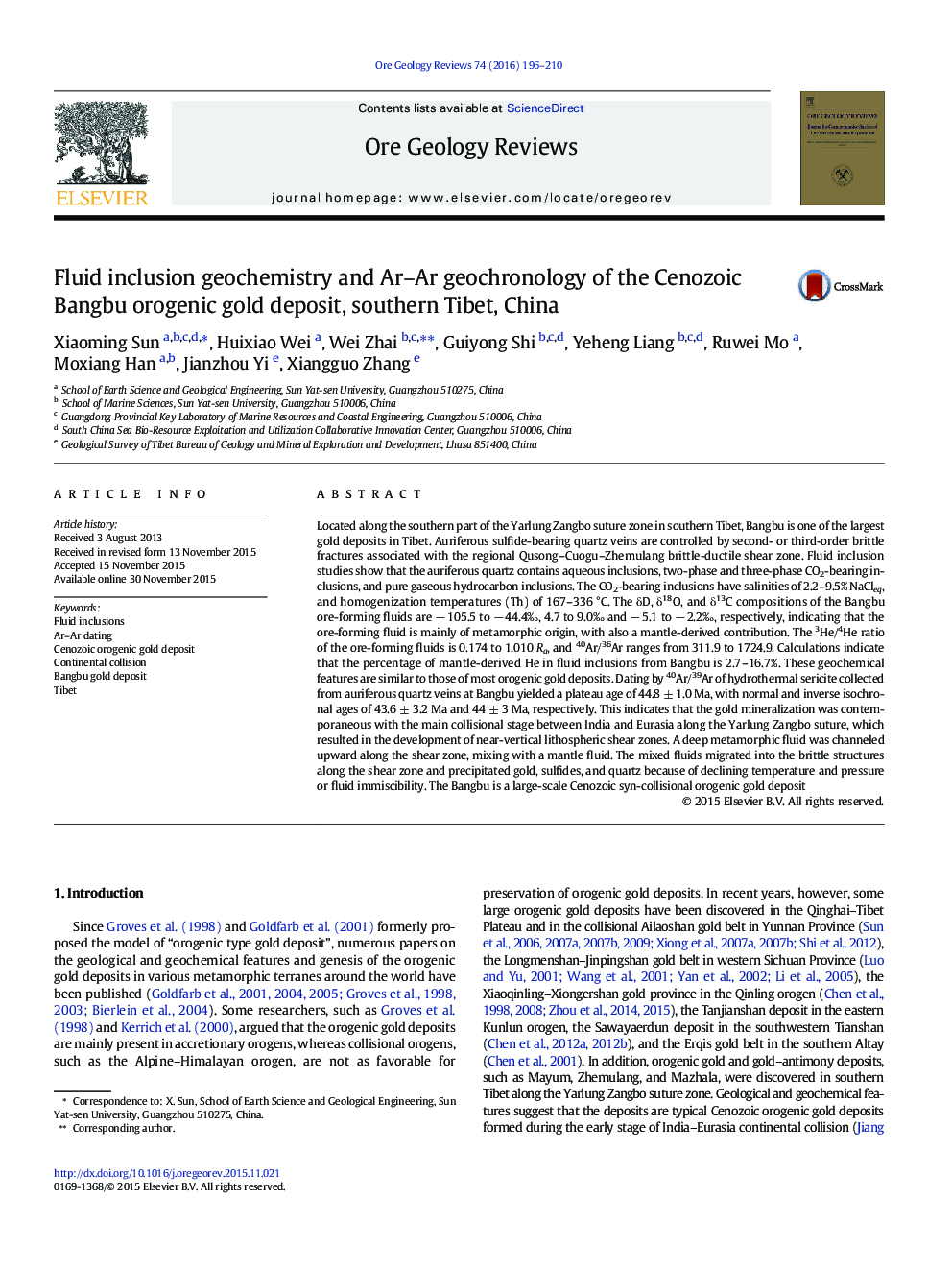| کد مقاله | کد نشریه | سال انتشار | مقاله انگلیسی | نسخه تمام متن |
|---|---|---|---|---|
| 4696832 | 1637232 | 2016 | 15 صفحه PDF | دانلود رایگان |
• Bangbu is one of the largest proved large-scale primary gold deposits in Tibet.
• 40Ar/39Ar dating yielded a Cenozoic forming age of Bangbu (44 ± 3 Ma–44.8 ± 1.0 Ma).
• Bangbu is a typical Cenozoic orogenic gold deposit formed under continental collisional background.
Located along the southern part of the Yarlung Zangbo suture zone in southern Tibet, Bangbu is one of the largest gold deposits in Tibet. Auriferous sulfide-bearing quartz veins are controlled by second- or third-order brittle fractures associated with the regional Qusong–Cuogu–Zhemulang brittle-ductile shear zone. Fluid inclusion studies show that the auriferous quartz contains aqueous inclusions, two-phase and three-phase CO2-bearing inclusions, and pure gaseous hydrocarbon inclusions. The CO2-bearing inclusions have salinities of 2.2–9.5% NaCleq, and homogenization temperatures (Th) of 167–336 °C. The δD, δ18O, and δ13C compositions of the Bangbu ore-forming fluids are − 105.5 to − 44.4‰, 4.7 to 9.0‰ and − 5.1 to − 2.2‰, respectively, indicating that the ore-forming fluid is mainly of metamorphic origin, with also a mantle-derived contribution. The 3He/4He ratio of the ore-forming fluids is 0.174 to 1.010 Ra, and 40Ar/36Ar ranges from 311.9 to 1724.9. Calculations indicate that the percentage of mantle-derived He in fluid inclusions from Bangbu is 2.7–16.7%. These geochemical features are similar to those of most orogenic gold deposits. Dating by 40Ar/39Ar of hydrothermal sericite collected from auriferous quartz veins at Bangbu yielded a plateau age of 44.8 ± 1.0 Ma, with normal and inverse isochronal ages of 43.6 ± 3.2 Ma and 44 ± 3 Ma, respectively. This indicates that the gold mineralization was contemporaneous with the main collisional stage between India and Eurasia along the Yarlung Zangbo suture, which resulted in the development of near-vertical lithospheric shear zones. A deep metamorphic fluid was channeled upward along the shear zone, mixing with a mantle fluid. The mixed fluids migrated into the brittle structures along the shear zone and precipitated gold, sulfides, and quartz because of declining temperature and pressure or fluid immiscibility. The Bangbu is a large-scale Cenozoic syn-collisional orogenic gold deposit
Figure optionsDownload as PowerPoint slide
Journal: Ore Geology Reviews - Volume 74, April 2016, Pages 196–210
